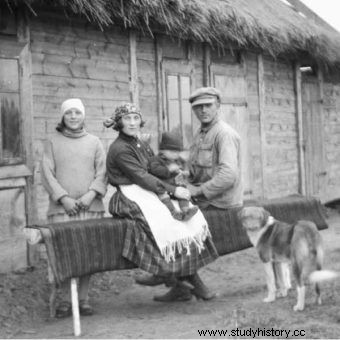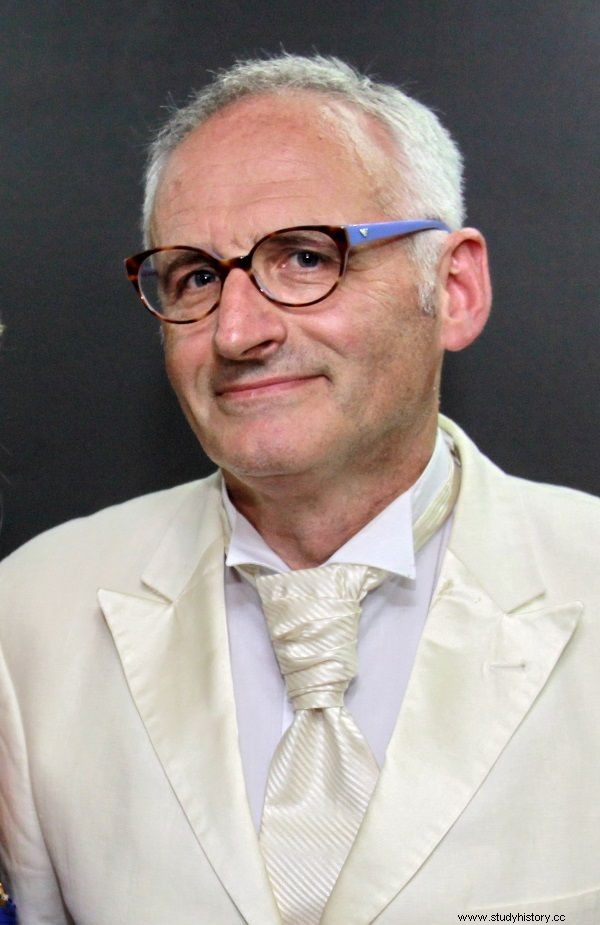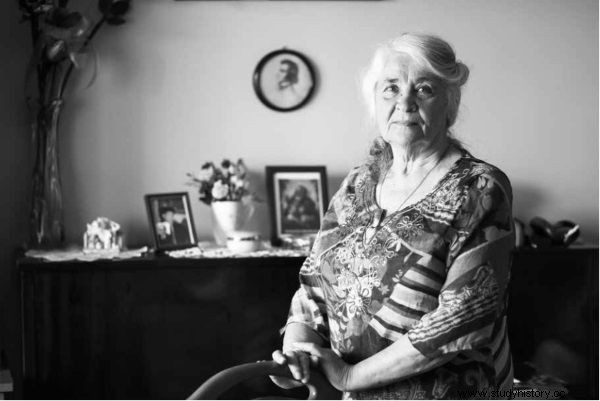When a crowd of armed and determined torturers surrounded the asleep village, the townspeople had little time. Immediately the first shots and screams splitting the darkness rang out. If they wanted to survive, they had to act immediately. These people managed to save their lives and survived the Volhynian massacre. How did they do it?
It was the most important Sunday mass, the sum. At that time, there were always the most faithful in the churches. On July 11, 1943, Ukrainian nationalists decided to take advantage of this fact by attacking Polish churches in Volhynia, including the one in Kisielin. In the village, however, not everything went according to the attackers' wishes.
Armed Ukrainians waited outside the church until people started to leave the mass, right into the barrels of their rifles, while someone noticed the trick and alerted the faithful. Instead of exposing themselves to the shot, some people retreated inside and fled to the presbytery connected with the church.

The photo shows a military settler with his family (photo:press materials of the Znak Horyzont publishing house)
Among the people who took refuge in this building were the parents of composer Krzesimir Dębski:18-year-old Aniela Sławińska and 21-year-old Włodzimierz Sławosz Dębski. A few months earlier, the man declared his sympathy, but she rejected the marriage proposal, considering that she was too young. However, when they found themselves in the presbytery besieged by Ukrainian nationalists, the composer's father renewed his proposal. This time he was accepted, although neither he nor the newlywed fiancée could be sure that they would survive the night.
The Poles, hidden in the presbytery, did not intend to surrender and resisted the attackers. The grenades thrown through the windows were immediately rejected. When the attackers tried to get inside using a ladder placed against the window, they threw bricks at them. When the door separating the Poles from the attackers was set on fire, they were extinguished with urine, as long as they did not weaken and stopped the murderers.

The composer Krzesimir Dębski cares for the preservation of the memory of Kisielin. Both his parents defended themselves in the church (photo:Jarosław Roland Kruk Wikipedia, license CC-BY-SA-3.0)
The defense was commanded by Włodzimierz Sławosz Dębski, who barely avoided death at that time - he was seriously injured in his leg, and if his future wife had not made makeshift dressings for him, he would have bled out on the priest's bed. After a dozen or so hours, the attackers left, and the defending Poles saw a terrible sight. 80 people died, but managed to survive.
Salt in the eye
In some places, after the news of repeated attacks on Poles, people began to organize themselves. Zasmyki was among such centers of resistance. There were about a hundred Polish farms in this settlement. Men began to pull out long-hidden weapons and create self-defense. Where did they get their rifles from in the middle of the occupation? Some of them came from the September campaign, others fell into the hands of peasants when the Soviets, in panic, retreated after the Third Reich attacked the USSR. Preventive hosts hid these troublesome things, protecting them from moisture. In 1943 they took them out of their hiding places and brought them to a working condition.
As Janina Wójcik, born in 1927, recalls in the book by Anna Herbich, "Girls from Wołynia":
Self-defense commanders organized an alarm system, patrols and guards to watch over the village outskirts at night. Thanks to this, we did not have to sleep in grain or forest, as did the population of many other Polish towns. Intensive training was underway in Zasmyki, and self-defense increased the ranks. Contact was made with Kedyw. As a result, the village turned into a fortress. For Banderites - a difficult nut to crack.
On the news of a thriving self-defense, Poles from other vulnerable or already raided towns started to draw to Zasmyki. About 60 people lived on the farm belonging to Janina Wójcik's family. The village fought off subsequent attacks with the help of Władysław Czermiński's unit "Hawk".
The Home Army soldiers used interesting tactics - they moved around Zasmyki in such a way that the Ukrainians thought that much larger Polish forces were stationed in the area. In the meantime, they intensively trained young people to fight. The seasoned and well-prepared "Hawk" unit was soon to become part of the 27th Volhynian Infantry Division of the Home Army. The village was destroyed only after the attack of the Germans, who were afraid of armed Poles at the rear of the front and attacked Zasmyki in agreement with the UPA.
Will they shoot the dead man to make sure he's dead?
Józefa Bryg's mother had a feeling. She did not want to spend the night in the basement anymore; she decided it was not safe. On the news that Ukrainian nationalists were approaching the village, she took the children and rushed to Pidkamin, to the Dominican monastery, where there was a large crowd of refugees. Unfortunately, her intuition failed her and it was there that the pogrom took place.
The UPA attackers weeded the Ukrainians away and let them go, then set up a machine gun and started shooting. First to Jews, then to Poles. Finally, the series was also aimed at Józefa's family.

Józefa Bryg in the photo with his mother and brother (photo:press materials of the Znak Horyzont publishing house)
The girl, who was only five years old at the time, fell crushed by the body of her mother who had just kept her in a scarf on her back. Her father did not die right away, but gravely wounded groaning louder and louder. The torturers approached him after a while and finished him off with a single shot to the head. The girls did not touch, believing that she was already dead. However, Janina was only pretending. As we can read in her report from Annie Herbich:
A bullet hit the head. Thick blood gushed through his ear and mouth, flooding his entire face. I hid deeper under Mommy's fur. I lay still, pretending to be a corpse. One leg was sticking out from under my mother's body. I was afraid to change position, because it seemed to me that the Banderites remembered the position of my body. If they see that something has changed, they will know I'm alive and will murder me.
After a few hours, she crawled out from under her mother's body when she was sure that the Ukrainian nationalists were gone. Shocked, she began loudly begging her dead mother to get up and run away with her. Her screams reached the ears of the two attackers still nearby. They quickly returned to the place where Janina was lying.

Józefa Bryg at present (photo:Rafał Guz, press materials of the Znak Horyzont publishing house)
The girl managed to squeeze under her mother's body again and put herself in the same position as before. The murderers began killing the wounded. When they got to the place where she was lying, one of them said that it was a pity to shoot her again, because she was already dead. As it turned out, Janina's brother also managed to survive, also sheltered by the corpses.
For many people, the advent of armed nationalists spelled a terrible end. The vast majority of Polish borderland villages did not defend themselves against attacks, and their inhabitants fell victim to brutal attacks. The survivors owed it to their cunning, thrift and help from Ukrainian neighbors who warned about the danger in time. Most often, however, it was not faith or reason that were responsible for survival, but a simple stroke of luck, which allowed them to slip silently, hide in a clump of bushes, or remain unnoticed, although the murderer was standing a step further.
Learn more about the shocking stories of the survivors of the Volhynia massacre in the book "Girls from Volhynia":
